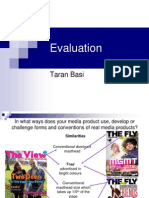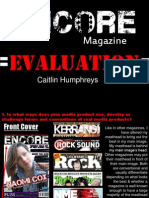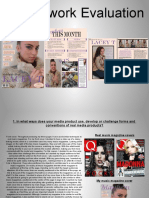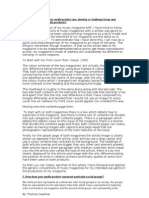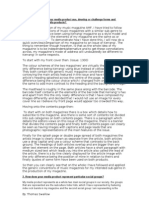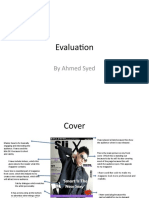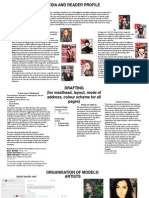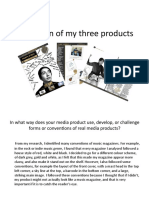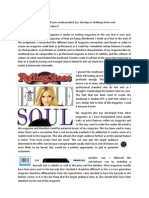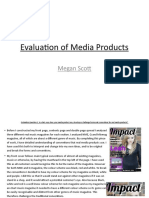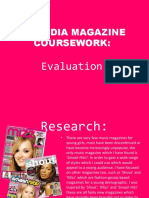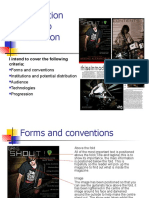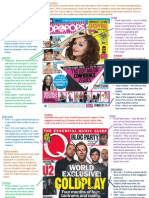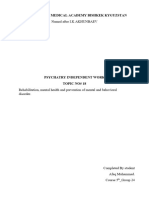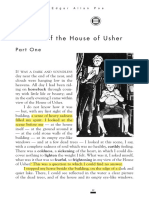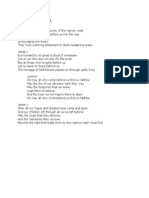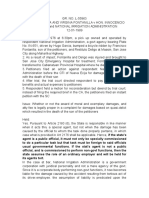0% found this document useful (0 votes)
443 views10 pagesMusic Magazine Evaluation
The document describes how the student's magazine design uses conventions of real music magazines. It discusses design elements like the dominant front cover photo, masthead, barcode placement, cover lines, price, competitions, secondary bands featured. The contents page layout includes features in yellow against a black background, regulars in black, the magazine logo, date and issue number. Quotes are used to entice readers. The overall style uses yellow, black and white consistently throughout with 2-3 fonts to be recognizable. The magazine title "Pulse" references the beat of music in a heavy black font. Elements are included to interest readers like free posters and the word "exclusive." The target audience is represented as those interested in indie/rock/
Uploaded by
HS_1877Copyright
© Attribution Non-Commercial (BY-NC)
We take content rights seriously. If you suspect this is your content, claim it here.
Available Formats
Download as PPTX, PDF, TXT or read online on Scribd
0% found this document useful (0 votes)
443 views10 pagesMusic Magazine Evaluation
The document describes how the student's magazine design uses conventions of real music magazines. It discusses design elements like the dominant front cover photo, masthead, barcode placement, cover lines, price, competitions, secondary bands featured. The contents page layout includes features in yellow against a black background, regulars in black, the magazine logo, date and issue number. Quotes are used to entice readers. The overall style uses yellow, black and white consistently throughout with 2-3 fonts to be recognizable. The magazine title "Pulse" references the beat of music in a heavy black font. Elements are included to interest readers like free posters and the word "exclusive." The target audience is represented as those interested in indie/rock/
Uploaded by
HS_1877Copyright
© Attribution Non-Commercial (BY-NC)
We take content rights seriously. If you suspect this is your content, claim it here.
Available Formats
Download as PPTX, PDF, TXT or read online on Scribd
/ 10

